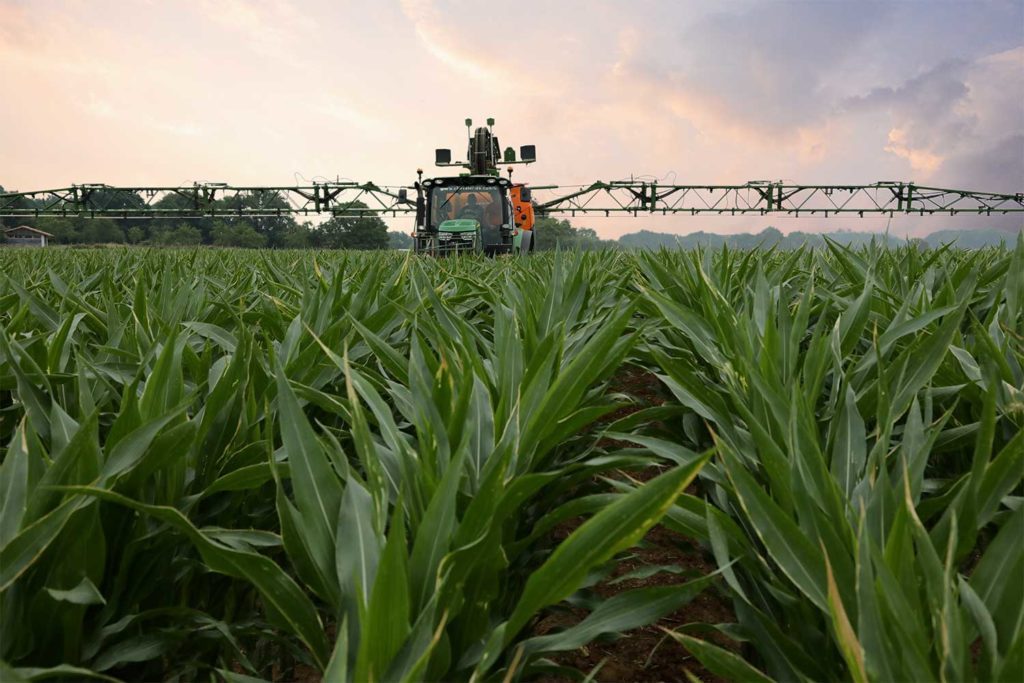Biostimulants are a class of highly diverse products that work in very different ways and produce very different results. They include plant, algae and mushroom extracts, organic acid concentrates, and micro-nutrients. The list is long, and although many have demonstrated their qualities, some growers are still skeptical about their effectiveness on field crops.
In the absence of an more appropriate category, phytosterol-based products have been classified as biostimulants. In some countries, they are approved as growth regulators, a class that does not quite do them justice either. The term ‘bioregulators’ would be more appropriate, but this category does not exist… yet. Phytosterols’ unique mode of action makes them difficult to classify and the approval framework for these molecules has yet to be established.
Direct action on crop water requirements
Like plant protection products, phytosterols have a protective effect on crops, but are in fact molecules naturally present in all plants to activate their defenses. Phytosterols are unique because they trigger a direct response from the plant, soliciting an appropriate physiological reaction linked specifically to a given stress factor. They act as signaling molecules on the plant’s metabolic pathway in response to various environmental stresses such as cold, heat and drought. This leads to the overexpression of stress management-related genes, helping the plant to adapt by producing specific proteins. The plant can reallocate its resources to cope with the stress faced, with almost predictable results. This characteristic is a fundamental difference between phytosterols and biostimulants.
Biostimulants are, in fact, external amendments for the crop. They can contain a variety of organic compounds which act alone or in concert to stimulate (usually indirectly) various biochemical processes in the plant. When it comes to combating water stress, some biostimulants can improve soil health or its ability to retain water, but none have a direct effect on plant water demand. They act in a less targeted manner and give less consistent, less predictable results. This is also due to the many environmental and agro-climatic conditions that interact and influence how biostimulants are expressed.
Phytosterols are not influenced by weather conditions at the time of application. They work in an identical way every time, and their effect is constant and persistent. To achieve their full potential, phytosterol-based solutions must be applied as a preventive measure according to a precise, tried-and-tested protocol: single application by foliar spraying at a precise stage of the crop growth cycle. As the plant’s ability to adapt is retained throughout the crop cycle, a single treatment is enough to secure yields.
Phytosterols have proven their effectiveness
The various solutions patented by Elicit Plant for corn and, more recently, sunflower and spring barley have proven their effectiveness. The water savings made (up to 20% less water required) secure yields, fertilization and grain fill. More than 500 field trials conducted since 2019 show solid, consistent performance across all geographical areas (Europe, North America and Latin America), with yields improved by an average of 10%.
A pioneer in phytosterol-based solutions, Best-a corn now protects over 300,000 hectares with an average measured yield gain of 570 kg per hectare, and up to 2,000 kg per hectare in optimal conditions. Elicit Plant’s latest innovations – EliSun-a (sunflower) and EliGrain-a (spring barley) – offer yield gains of 320 kg per hectare and 480 kg per hectare respectively (average performance measured in 2023). Which biostimulant can claim anything comparable?


